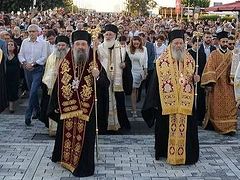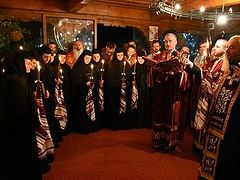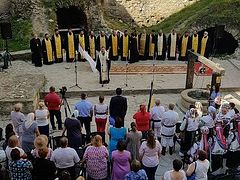Ion Corvin, Romania, December 2, 2019
St. Andrew the First-Called is venerated by the Orthodox faithful as a great missionary to several peoples and lands, and he is especially loved in Romania, where he labored for 20 years in the preaching of Christ.
Every year, on his new calendar feast day, November 30, thousands of faithful Romanians go on pilgrimage to the cave where he lived in southeastern Romania. It is the last great pilgrimage of the year in the Romanian Church.
This year, the feast drew 15,000 faithful, reports the Basilica News Agency.
Believers from all areas of the country gathered at the Monastery of the Cave of St. Andrew in the Ion Corvin commune in the city of Constanța on Saturday to worship at the place where their spiritual father took shelter while teaching Christianity in Sciția Mică.
The pilgrims were blessed to venerate the relics of St. Andrew, as well as relics of St. Partenie of Lampsacus, brought from Mt. Athos, and of Sts. Panteleimon, Epictet, and Astion, brought from the Archdiocesan Cathedral in Constanța.
The service was celebrated by His Eminence Archbishop Teodosie of Constanța together with hierarchs from Romania, Greece, and Bulgaria.
Some have speculated that St. Andrew remained in Romania for so long because he felt a great kinship with them, as they were already monotheists and were more open to adopting Christianity. Their clergy were already celibates and vegans and the people did not keep slaves. According to Romanian tradition, confirmed by archaeological findings, the Dacians became Christians under St. Andrew.






